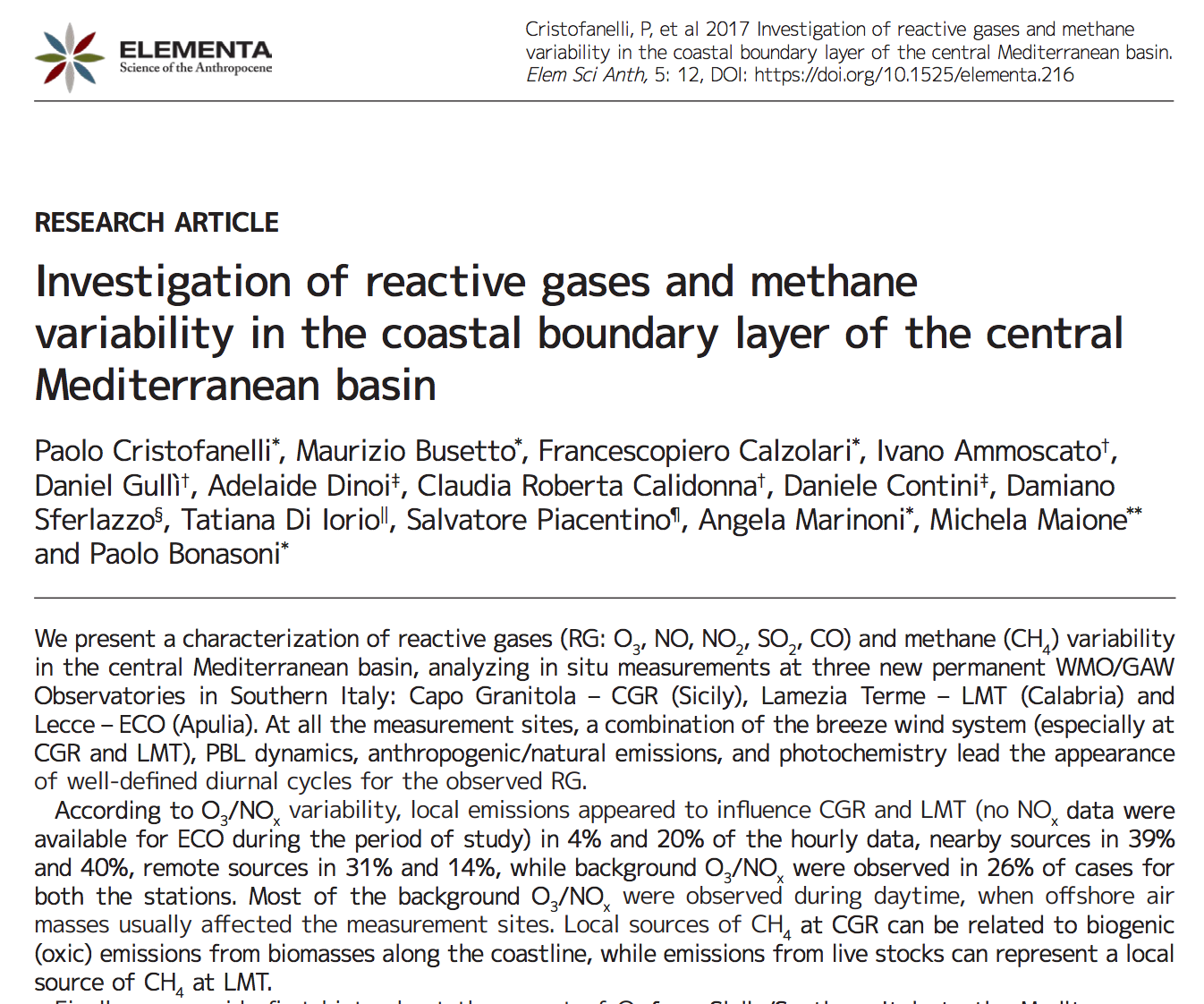Osservatori I-AMICA: pubblicato nuovo studio su gas reattivi e composti climalteranti sul Mediterraneo
j F Y in Senza categoria
Pubblicato sulla rivista “ELEMENTA Science of the Anthropocene” un nuovo studio riguardante gas reattivi e composti clima-alteranti sul Bacino del Mediterraneo nell’ambito del progetto PON I-AMICA, utilizzando le misure eseguite in tre suoi Osservatori climatico-ambientali: Lecce (Puglia), Lamezia Terme (Calabria) e Capo Granitola (Sicilia).
Investigation of reactive gases and methane variability in the coastal boundary layer of the central Mediterranean basin
Authors: Paolo Cristofanelli , Maurizio Busetto, Francescopiero Calzolari, Ivano Ammoscato, Daniel Gullì, Adelaide Dinoi, Claudia Roberta Calidonna, Daniele Contini, Damiano Sferlazzo, Tatiana Di Iorio, Salvatore Piacentino, Angela Marinoni, Michela Maione, Paolo Bonasoni
ABSTRACT
We present a characterization of reactive gases (RG: O3, NO, NO2, SO2, CO) and methane (CH4) variability in the central Mediterranean basin, analyzing in situ measurements at three new permanent WMO/GAW Observatories in Southern Italy: Capo Granitola – CGR (Sicily), Lamezia Terme – LMT (Calabria) and Lecce – ECO (Apulia). At all the measurement sites, a combination of the breeze wind system (especially at CGR and LMT), PBL dynamics, anthropogenic/natural emissions, and photochemistry lead the appearance of well-defined diurnal cycles for the observed RG. According to O3/NOxvariability, local emissions appeared to influence CGR and LMT (no NOx data were available for ECO during the period of study) in 4% and 20% of the hourly data, nearby sources in 39% and 40%, remote sources in 31% and 14%, while background O3/NOxwere observed in 26% of cases for both the stations. Most of the background O3/NOx were observed during daytime, when offshore air masses usually affected the measurement sites. Local sources of CH4 at CGR can be related to biogenic (oxic) emissions from biomasses along the coastline, while emissions from live stocks can represent a local source of CH4 at LMT. Finally, we provide first hints about the export of O3 from Sicily/Southern Italy to the Mediterranean Sea by comparing simultaneous observations at CGR and Lampedusa (LMP), a small island in the middle of the Strait of Sicily where a WMO/GAW Regional Station is located. In summer, O3 increased by some 7 ppb for transport times lower than 48 h, while no statistical significant differences were observed for travel time longer than 48. This would suggest that photochemical O3production occurred within air-mass travelling from CGR to LMP, but also that the central Mediterranean MBL represents a O3 sink for relatively aged air-masses.







